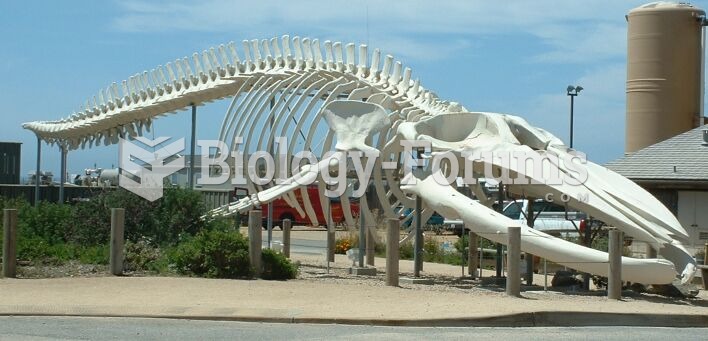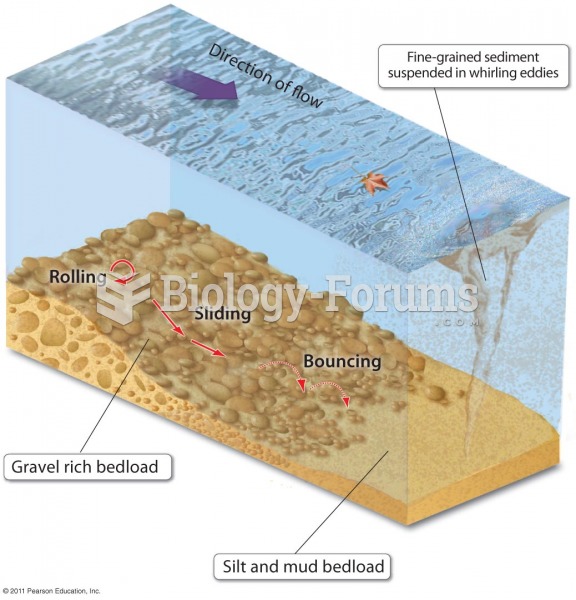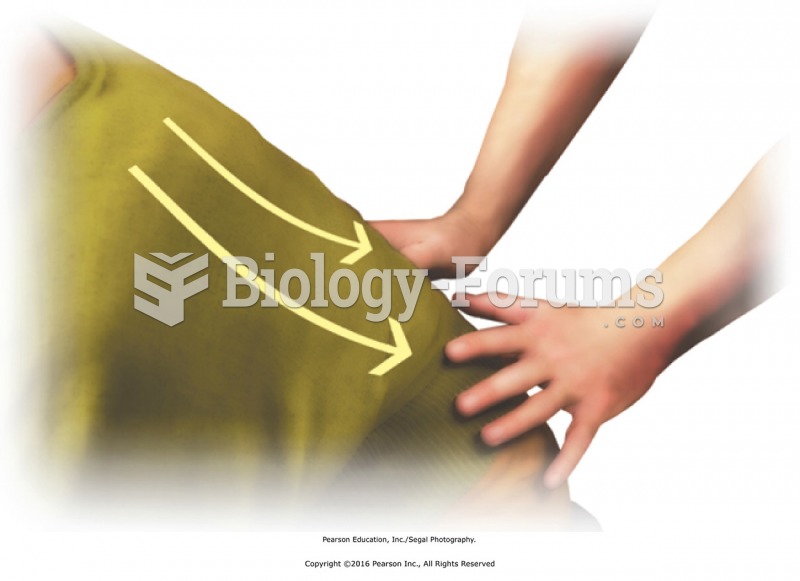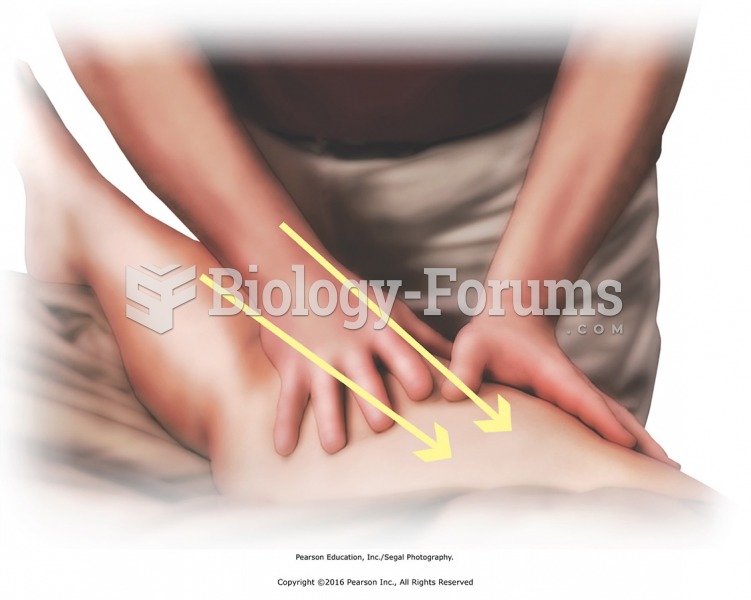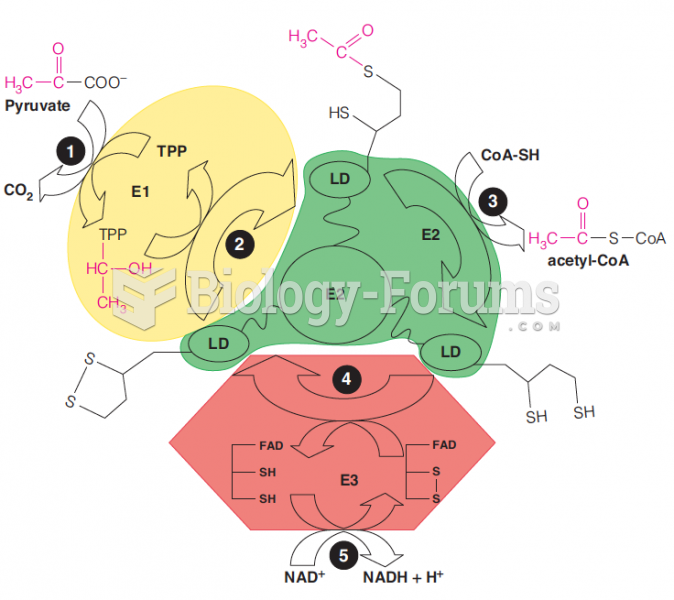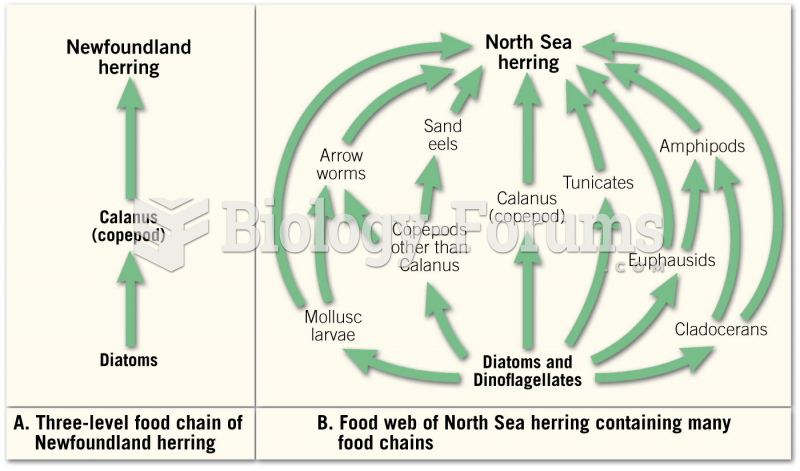Answer to Question 1
Most of the hydrolysis of triglycerides occurs in the small intestine. The major fat-digesting enzymes are pancreatic lipases; some intestinal lipases are also active. These enzymes remove each of a triglyceride's outer fatty acids one at a time, leaving a monoglyceride. Occasionally, enzymes remove all three fatty acids, leaving a free molecule of glycerol.
Phospholipids are digested similarlythat is, their fatty acids are removed by hydrolysis. The two fatty acids and the remaining glycerol and phosphate fragments are then absorbed. Most sterols can be absorbed as is; if any fatty acids are attached, they are first hydrolyzed off.
Small molecules (glycerol and short- and medium-chain fatty acids) can diffuse easily into the intestinal cells; they are absorbed directly into the bloodstream. Larger molecules (monoglycerides and long-chain fatty acids) are emulsified by bile, forming spherical complexes known as micelles. The micelles diffuse into the intestinal cells, where the monoglycerides and long-chain fatty acids are reassembled into new triglycerides. Within the intestinal cells, the newly made triglycerides and other lipids (cholesterol and phospholipids) are packed with protein into transport vehicles known as chylomicrons. The intestinal cells then release the chylomicrons into the lymphatic system. The chylomicrons glide through the lymph until they reach a point of entry into the bloodstream at the thoracic duct near the heart. The blood carries these lipids to the rest of the body for immediate use or storage. A look at these lipids in the body reveals the kinds of fat the diet has been delivering. The blood, fat stores, and muscle cells of people who eat a diet rich in unsaturated fats, for example, contain more unsaturated fats than those of people who select a diet high in saturated fats.
The chylomicrons are one of several clusters of lipids and proteins that are used as transport vehicles for fats. As a group, these vehicles are known as lipoproteins, and they solve the body's challenge of transporting fat through the watery bloodstream. The body makes four main types of lipoproteins, distinguished by their size and density. Each type contains different kinds and amounts of lipids and proteins. The more lipids, the less dense; the more proteins, the more dense.
The chylomicrons are the largest and least dense of the lipoproteins. They transport diet-derived lipids (mostly triglycerides) from the small intestine (via the lymph system) to the rest of the body. Cells all over the body remove triglycerides from the chylomicrons as they pass by, so the chylomicrons get smaller and smaller. Within 14 hours after absorption, most of the triglycerides have been depleted, and only a few remnants of protein, cholesterol, and phospholipid remain. Special protein receptors on the membranes of the liver cells recognize and remove these chylomicron remnants from the blood.
Meanwhile, in the liverthe most active site of lipid synthesiscells are making cholesterol, fatty acids, and other lipid compounds. Ultimately, the lipids made in the liver and those collected from chylomicron remnants are packaged with proteins as a VLDL (very-low-density lipoprotein) and shipped to other parts of the body. As the VLDL travel through the body, cells remove triglycerides. As they lose triglycerides, the VLDL shrink and the proportion of lipids shifts. Cholesterol becomes the predominant lipid, and the lipoprotein becomes smaller and denser. As this occurs, the VLDL becomes an LDL (low-density lipoprotein), loaded with cholesterol, but containing relatively few triglycerides.
The LDL circulate throughout the body, making their contents available to the cells of all tissuesmuscles (including the heart muscle), fat stores, the mammary glands, and others. The cells take triglycerides, cholesterol, and phospholipids to use for energy, make hormones or other compounds, or build new membranes. Special LDL receptors on the liver cells play a crucial role in the control of blood cholesterol concentrations by removing LDL from circulation.
The liver makes HDL (high-density lipoprotein) to remove cholesterol from the cells and carry it back to the liver for recycling or disposal. By efficiently clearing cholesterol, HDL lowers the risk of heart disease. In addition, HDL have anti-inflammatory properties that seem to keep artery-clogging plaque from breaking apart and causing heart attacks.
Answer to Question 2
Foods derived from both plants and animals contain sterols, but only those from animals contain significant amounts of cholesterolmeats, eggs, seafood, poultry, and dairy products. Some people, confused about the distinction between dietary cholesterol and blood cholesterol, have asked which foods contain the good cholesterol. Good cholesterol is not a type of cholesterol found in foods, but it refers to the way the body transports cholesterol in the blood, as explained in a later section of this chapter.
Sterols other than cholesterol are naturally found in plants. Being structurally similar to cholesterol, plant sterols interfere with cholesterol absorption. By inhibiting cholesterol absorption, a diet rich in plant sterols lowers blood cholesterol levels. Food manufacturers have fortified foods such as margarine with plant sterols, creating a functional food that helps to reduce blood cholesterol.
Many vitally important body compounds are sterols. Among them are bile acids, the sex hormones (such as testosterone androgen, and estrogen), the adrenal hormones (such as cortisol cortisone, and aldosterone), and vitamin D, as well as cholesterol itself. Cholesterol in the body can serve as the starting material for the synthesis of these compounds or as a structural component of cell membranes; more than 90 percent of all the body's cholesterol is found in the cells. Despite common misconceptions, cholesterol is not a villain lurking in some evil foodsit is a compound the body makes and uses. The chemical structure is the same, but cholesterol that is made in the body is referred to as endogenous, whereas cholesterol from outside the body (from foods) is referred to as exogenous. Right now, as you read, your liver is manufacturing cholesterol from fragments of carbohydrate, protein, and fat. In fact, the liver makes about 800 to 1500 milligrams of cholesterol per day, thus contributing much more to the body's total than does the diet. For perspective, the Daily Value on food labels for cholesterol is 300 milligrams per day.
Cholesterol's harmful effects in the body occur when it accumulates in the artery walls and contributes to the formation of plaque. These plaque deposits lead to atherosclerosis, a disease that causes heart attacks and strokes.


